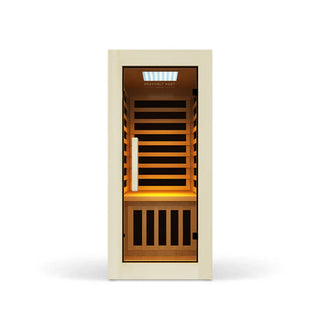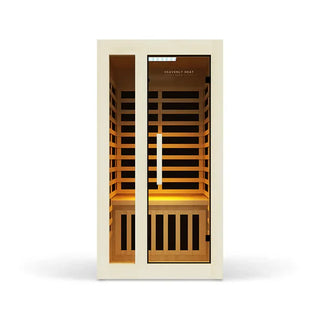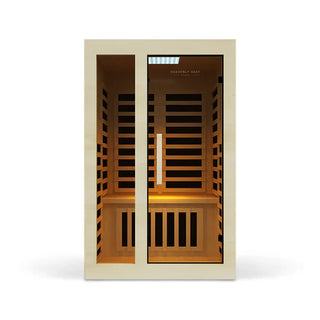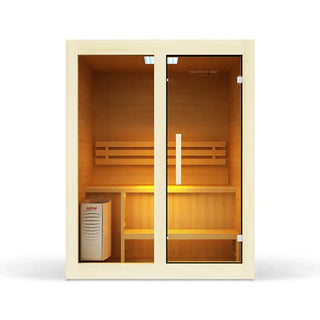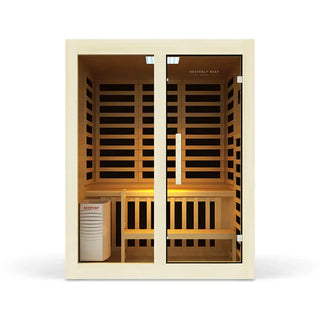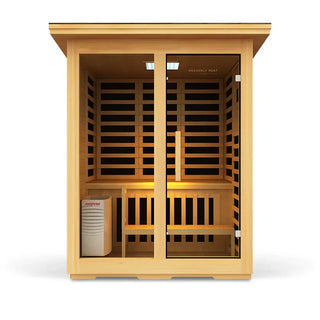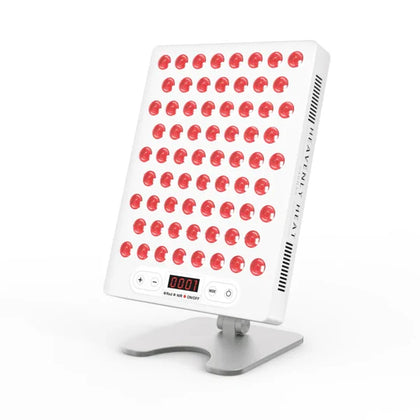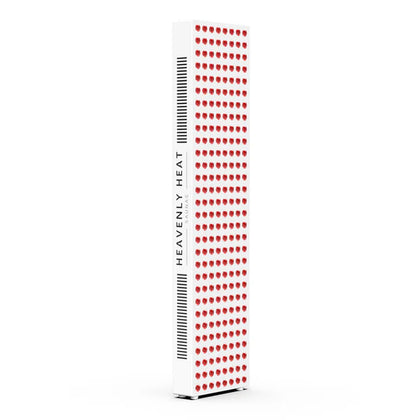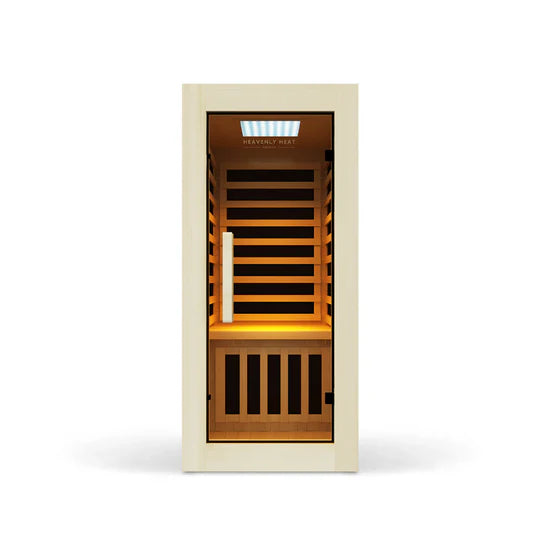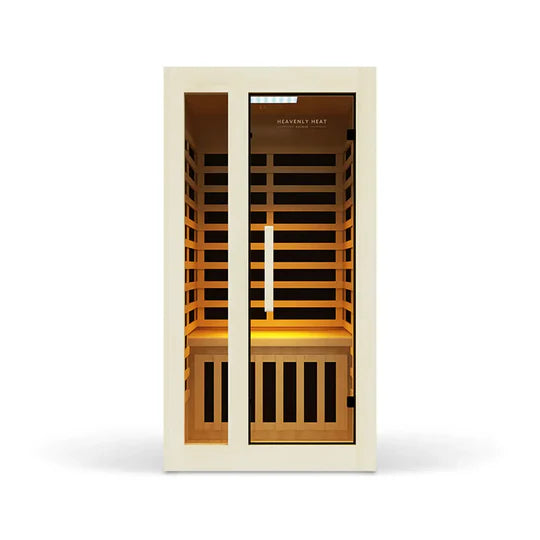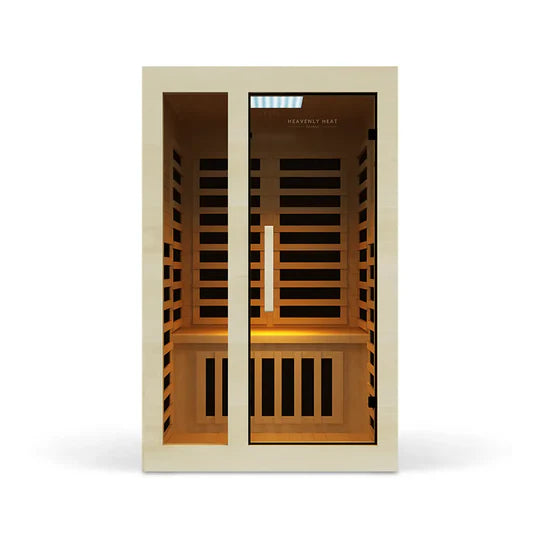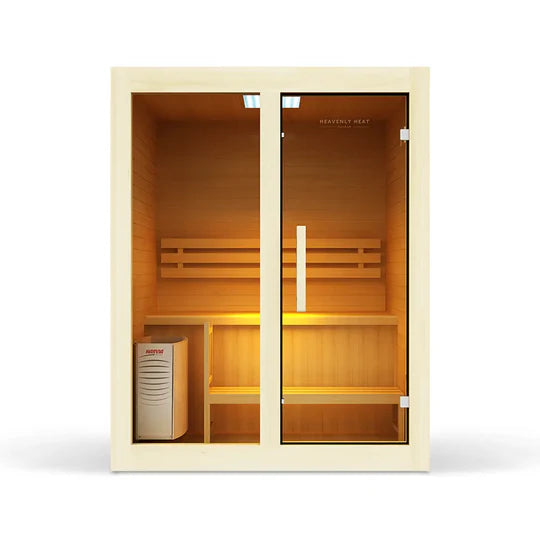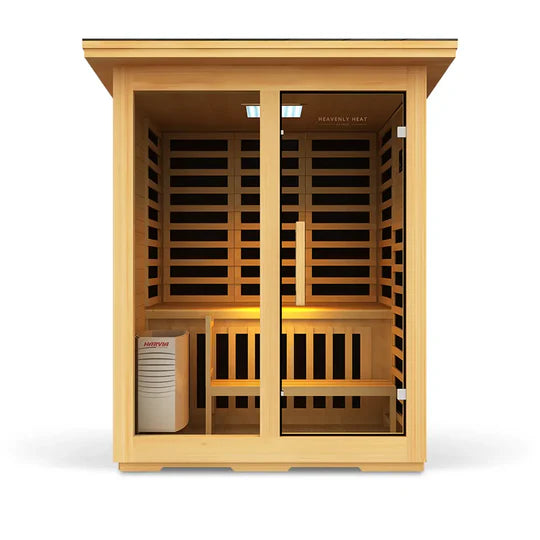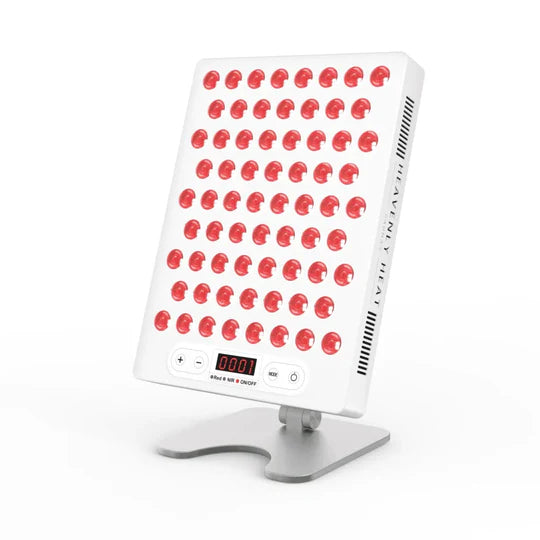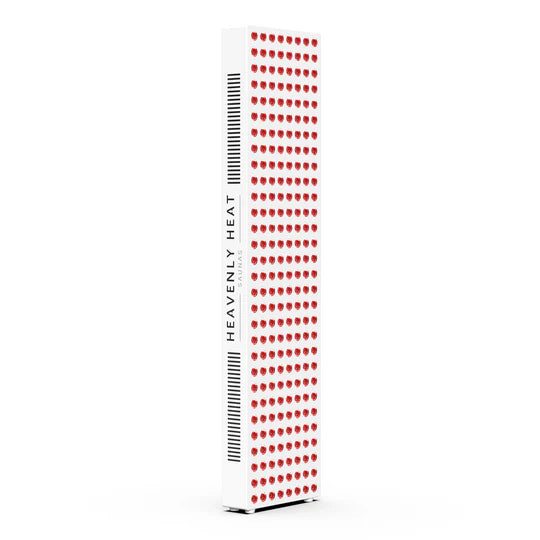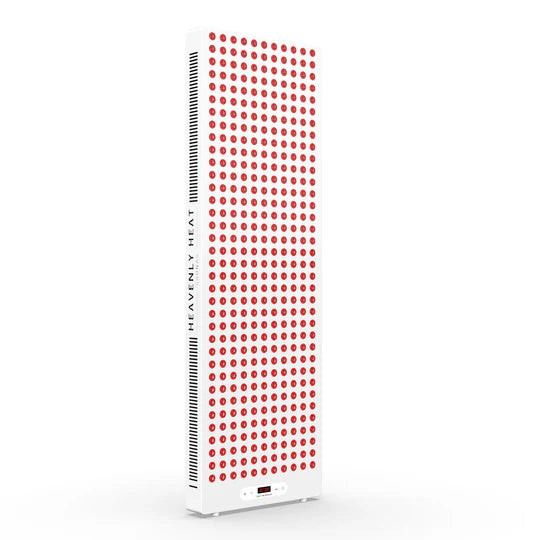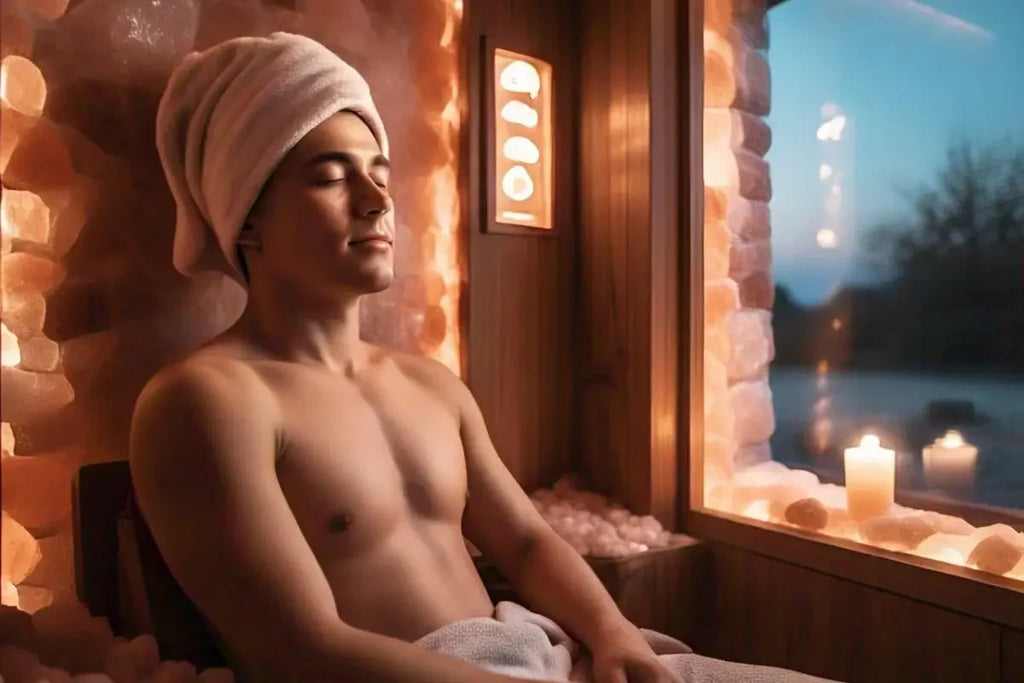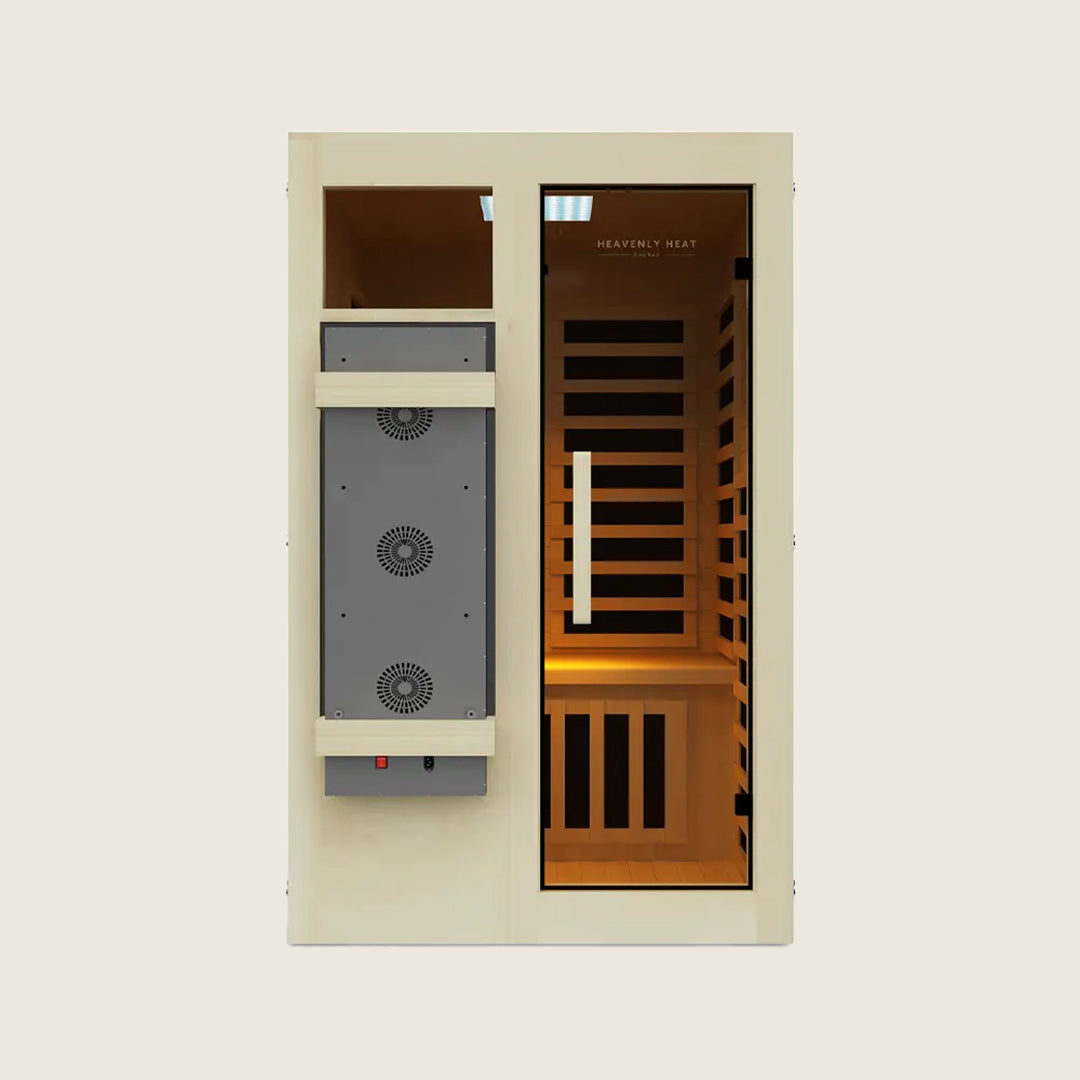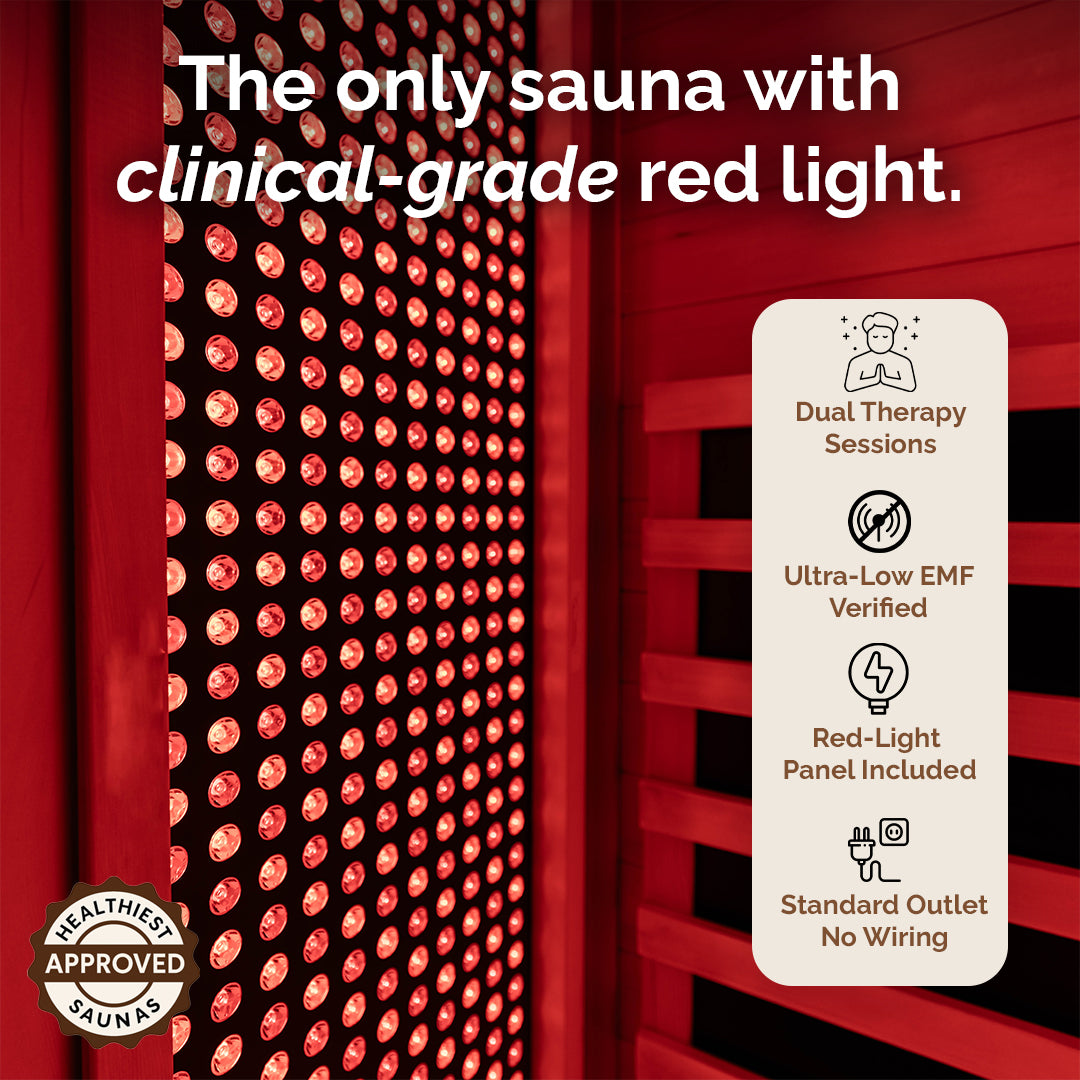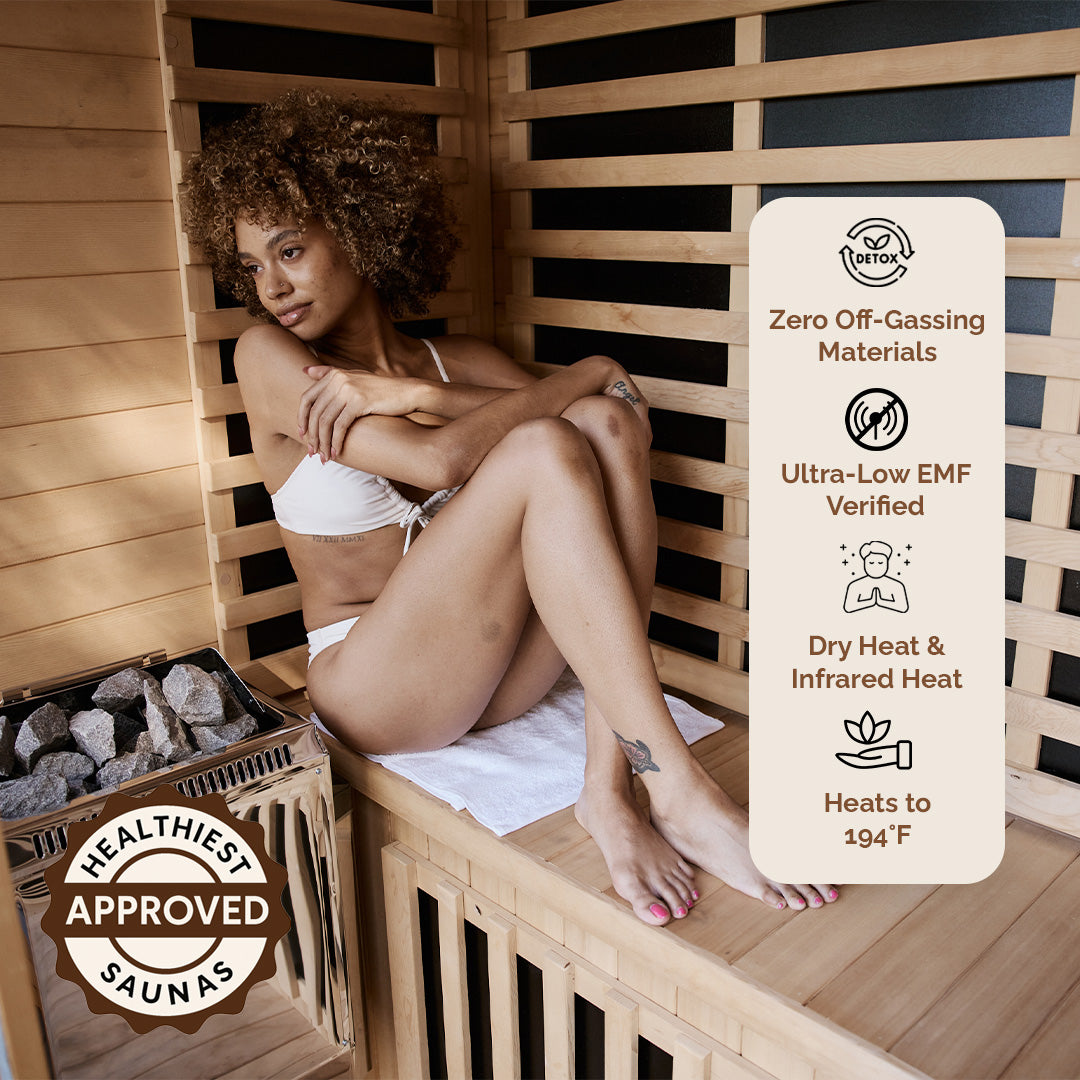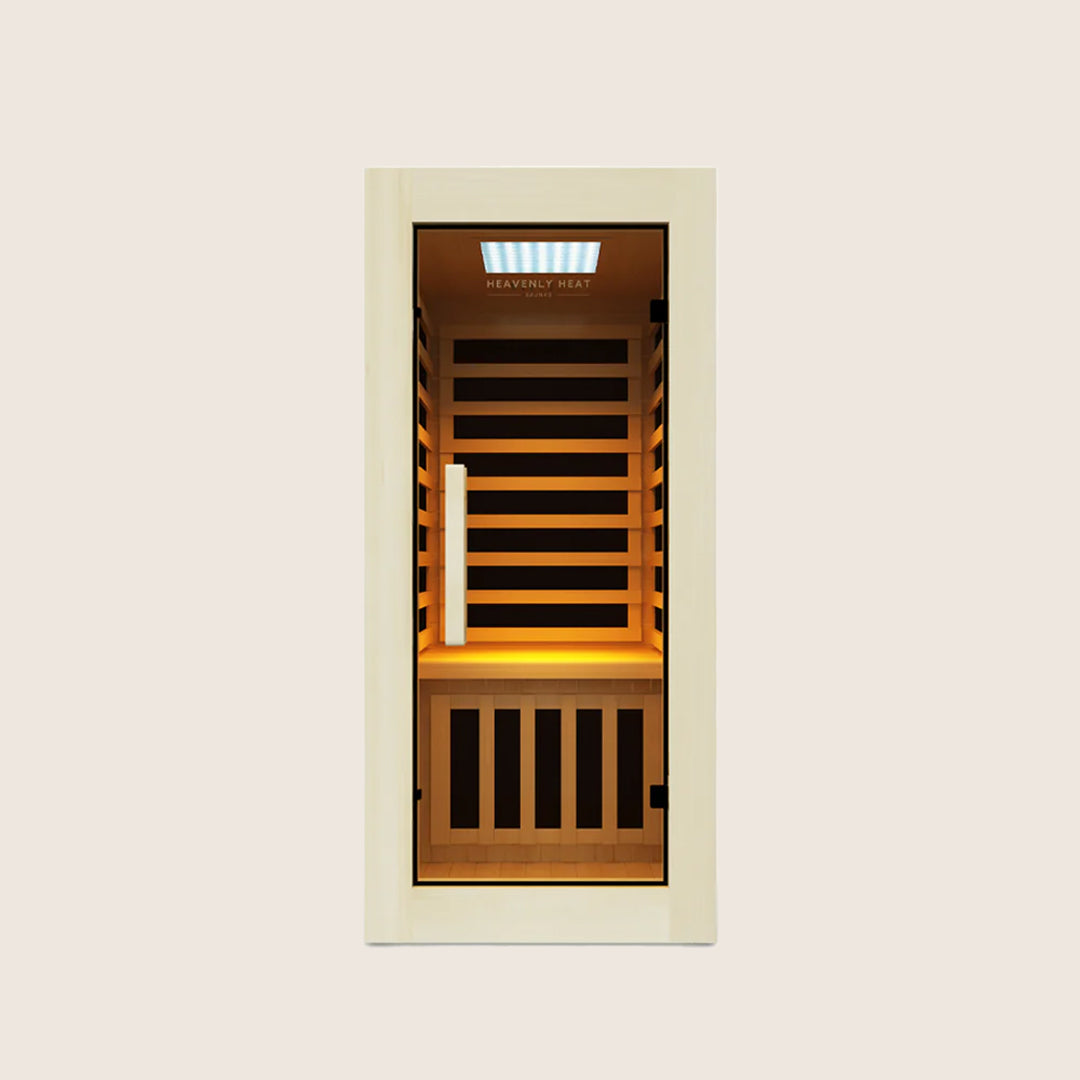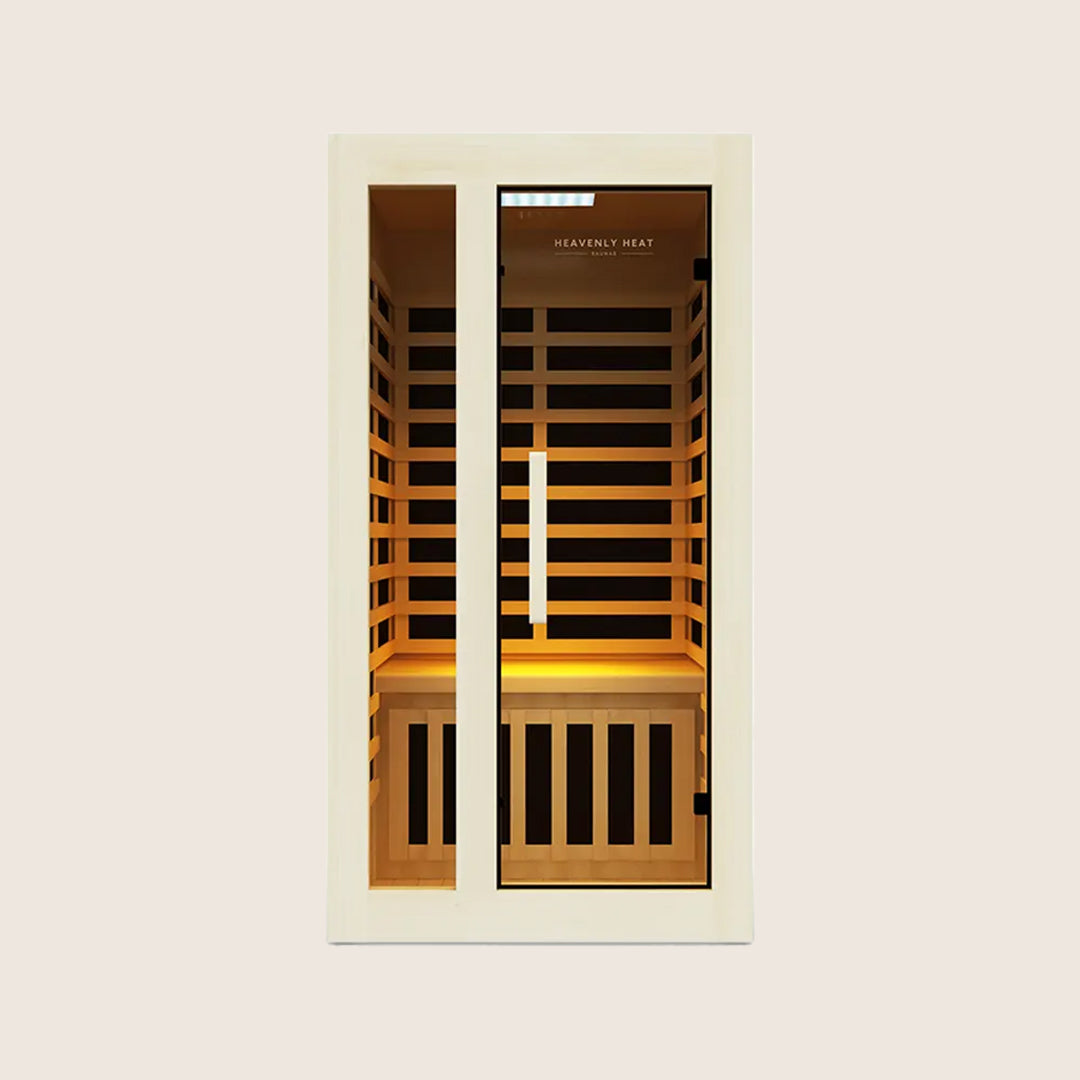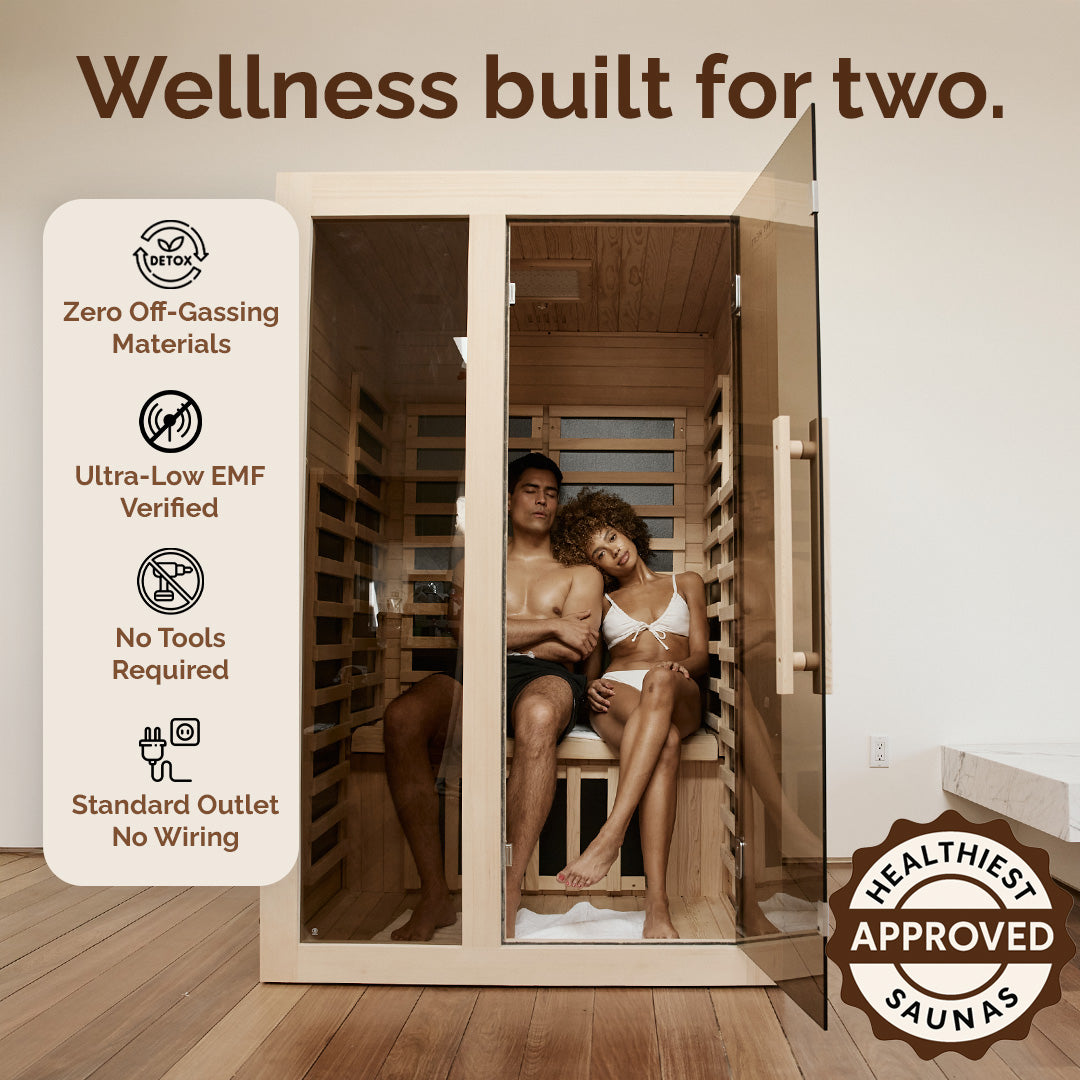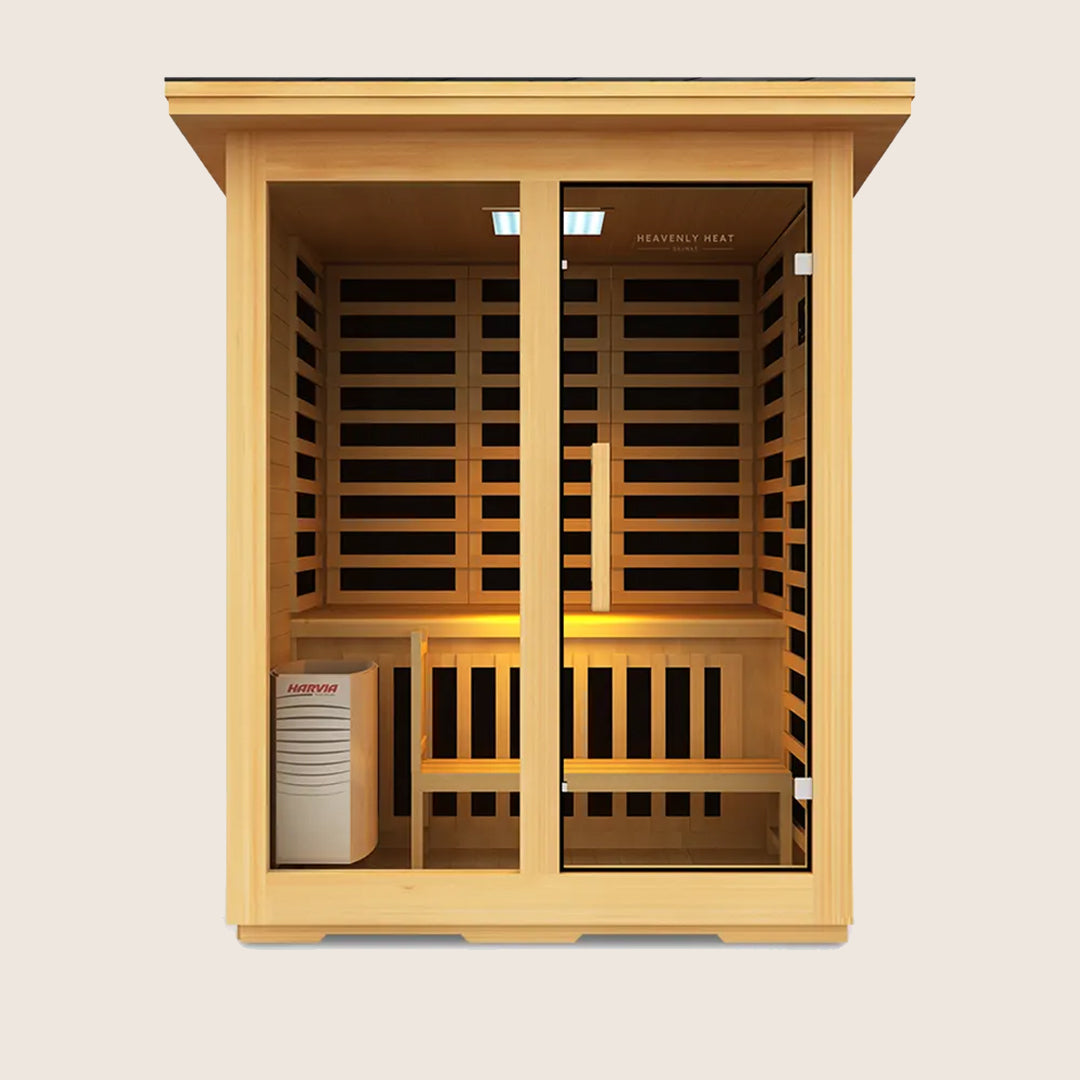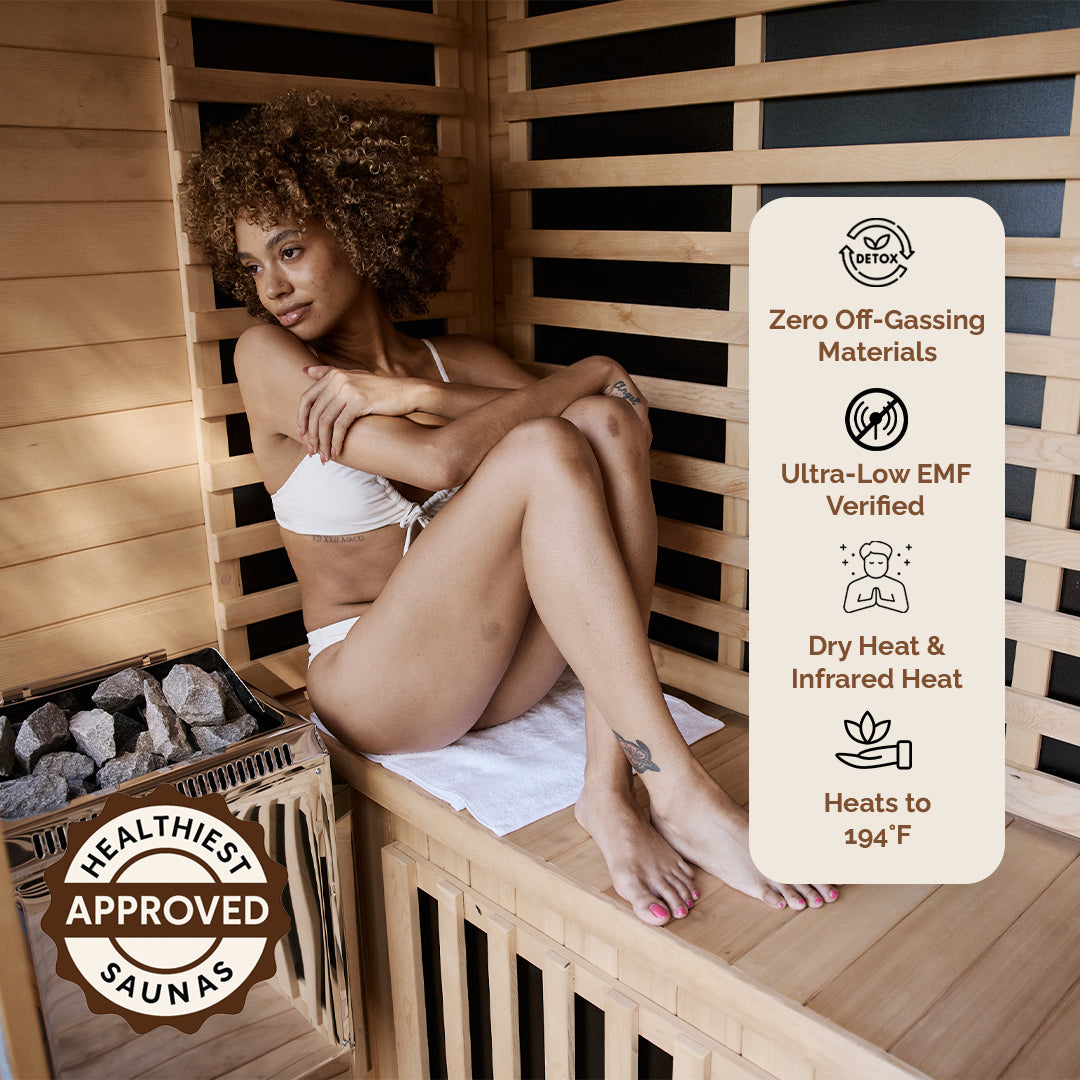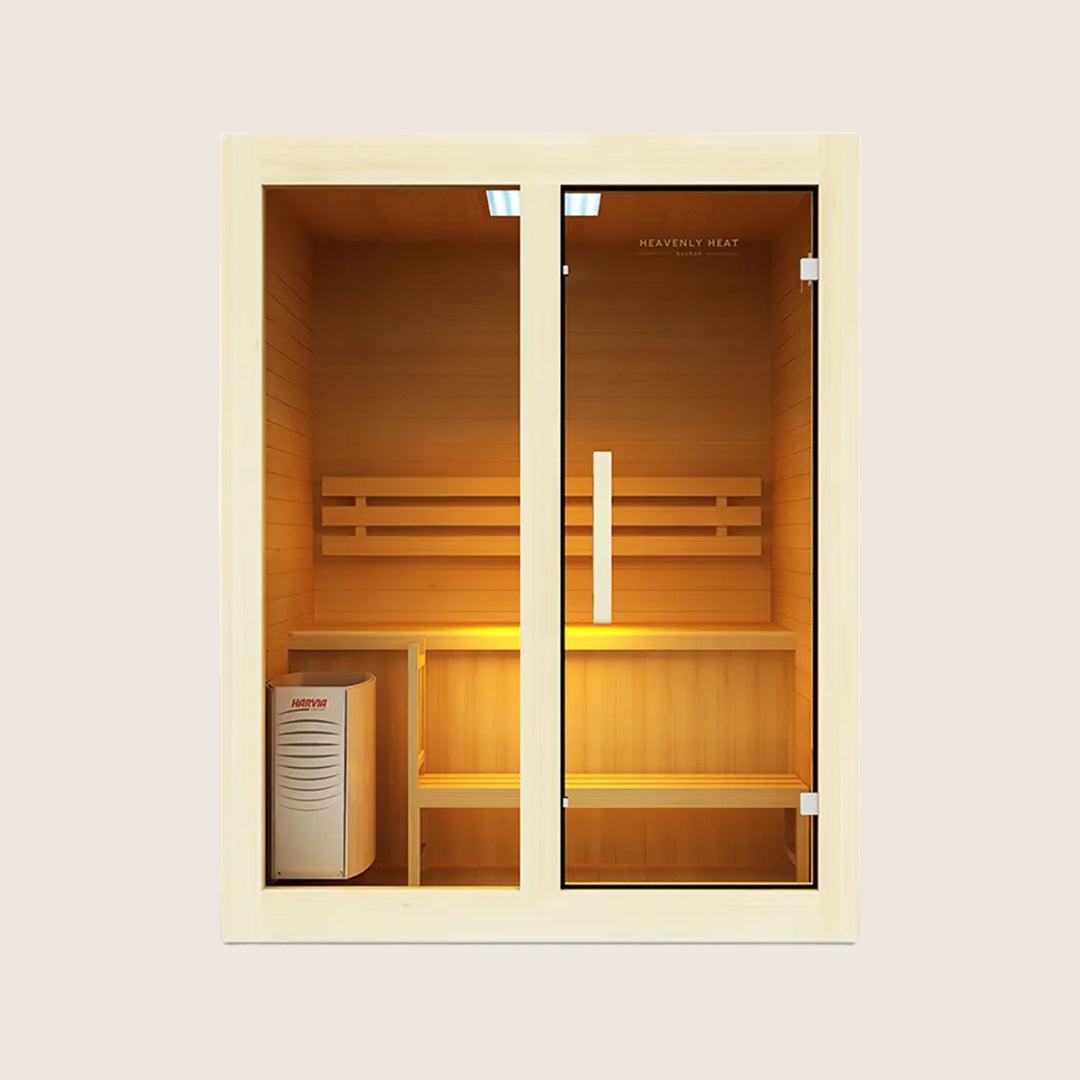Dry Brushing Before or After Sauna: Benefits, Lymphatic Drainage, and Skin Exfoliation Techniques
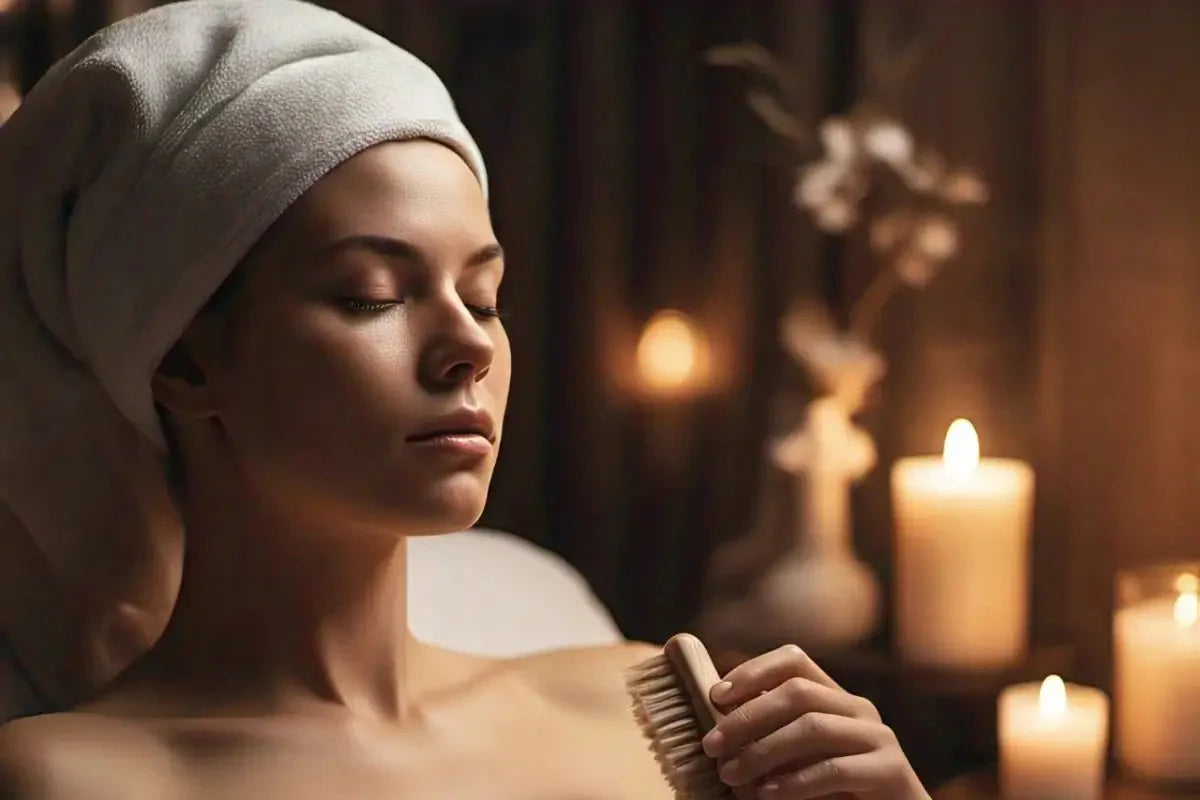
Are you confused about whether to dry brush before or after your sauna? This common mistake can lead to skin irritation and missed benefits like improved circulation and smoother skin.
Don’t worry – we’ve got the best practices covered. Learn when to dry brush for maximum skin health and get the glowing, rejuvenated skin you deserve.
Key Takeaways
Dry brushing before a sauna enhances circulation and opens pores, making it easier for your skin to sweat and detoxify.
Choose a dry brush with natural bristles for better exfoliation and gentler results.
Always brush in the direction of your heart to boost circulation and lymphatic flow.
Rinse off after a sauna session to remove sweat, toxins, and dead skin cells for better skin health.
Moisturize right after dry brushing to lock in hydration and keep your skin smooth.
What is Lymphatic Drainage ?
The Cleveland Clinic defines lymphatic drainage as the body’s natural process of moving lymph,a fluid containing white blood cells and waste,through a network of vessels and nodes. This system supports immunity and fluid balance. When it’s impaired by illness, surgery, or other medical conditions, lymph can accumulate in tissues, causing swelling (lymphedema) and discomfort.
Several primary causes may disrupt lymphatic drainage:
Surgery or radiation : Especially common in breast cancer treatment where lymph nodes are removed.
Infections : Conditions like cellulitis or chronic sinus issues can congest lymph flow.
Chronic illness : Fibromyalgia, rheumatoid arthritis, and lipedema often impair lymph circulation.
Venous insufficiency : Poor blood flow from the legs hinders lymph return.
Trauma or injury : Tissue damage may block normal lymph movement.
When drainage is blocked, people often experience fatigue, swelling, brain fog, and skin issues,making daily activities like walking or concentrating more difficult.
Manual lymphatic drainage massage, a gentle technique guided by trained professionals, can ease symptoms by moving trapped fluid toward functioning lymph nodes. At-home techniques, under medical guidance, may also help. While not a cure-all, this therapy offers a non-invasive, hopeful path to relief, especially when paired with compression garments or lifestyle changes like regular movement.
What Is Dry Brushing and How Does It Work?
- Dry brushing clears away dead skin so your body feels clean: Dry brushing uses a stiff, dry brush to sweep over your skin. This helps get rid of dry, flaky skin, making your body feel fresh and smooth after each use.
- It boosts blood flow so your skin looks more alive: Brushing your skin in this way helps your blood move better through your body. This increased circulation makes your skin glow naturally and feel more energized.
- It helps the body push out waste and reduce swelling: Dry brushing also wakes up your lymphatic system. This is the part of your body that removes waste and toxins, so regular brushing can help reduce puffiness and keep your body feeling lighter and cleaner.
- It’s not just exfoliating, it does even more for your body: While dry brushing does remove dead skin like other exfoliators, it goes further by improving how your body moves blood and flushes out toxins. That’s why your skin can look fresher and healthier when you make it a habit.
How to Pick the Best Dry Brush for Your Skin
Consider the Bristle Type
- Soft bristles feel better on sensitive skin: When selecting a dry brush, the bristle type plays a key role in how it feels on your skin. If you have sensitive skin, soft natural bristles are a gentler choice and help you avoid irritation.
- Natural bristles are kinder to your skin than synthetic ones: Synthetic bristles are usually stiffer and can be rough on the skin. Natural bristles are more skin-friendly and still do a great job at exfoliating.
- Soft brushes help prevent breakouts on acne-prone skin: If you deal with acne, using a soft bristle brush reduces the chances of irritating your skin and making breakouts worse.
- Testing the bristle on your arm helps you choose the right one: Before using the brush on your body, lightly test it on your forearm. This helps you figure out if it’s too rough or just right for your skin.
Choose the Right Bristle Firmness for Your Skin Type
- Soft bristles feel gentle and won’t hurt sensitive skin: If you have sensitive skin, using soft bristles is important. Hard bristles can make your skin red or irritated, so it’s better to start soft and avoid discomfort.
- Firm bristles work better on thick or rough skin: For tougher skin, like on your legs or feet, firm bristles help clean and exfoliate deeper. These areas can handle more pressure without feeling too rough.
- Medium bristles are safe if you don’t know your skin type: If you're not sure how your skin will react, a brush with medium firmness is a smart and safe way to start. It gives you a balanced feel without going too soft or too hard.
- Your skin will tell you if the brush is too soft or too rough: With regular use, you’ll notice how your skin reacts. If the brush feels too harsh, go softer. If it feels too light, a firmer one might help exfoliate better.
Pick the Best Handle Length for Easy Use
- A long handle makes it easier to brush your back: When the handle is longer, it helps you reach tricky spots like your back without twisting or struggling. This makes the whole brushing process feel much smoother and more comfortable.
- A short handle gives you better control for smaller areas: Short handles are great when you’re brushing areas like your arms and legs. You get more control, which makes it easier to move the brush exactly where you want it.
- The wrong handle length can make brushing feel awkward: If the handle is too long or too short for your body, you might find yourself bending or reaching in uncomfortable ways. That can take the ease out of the process and even cause a bit of strain.
- The handle should feel right in your hand for smooth brushing: It’s important to pick a handle that feels natural and easy to hold. When the grip feels right, your strokes will be smoother and brushing becomes effortless.
Look for a Brush Shape That Fits Your Needs
The shape of the dry brush influences its effectiveness. Round brushes are often used for gentle, circular motions, while oval shapes are ideal for larger surface areas.
For those with limited mobility or flexibility, a long-handled oval brush can be a game changer, offering ease of reach for the back.
When selecting a shape, consider both your skin type and the areas you’ll be targeting.
Opt for High-Quality Materials for Durability
A high-quality dry brush is a worthy investment for your skin. Brushes made from natural materials like wood or bamboo tend to be more durable than plastic alternatives.
While plastic can break down over time, natural materials offer long-lasting sturdiness and often have a smoother feel.
Look for brushes made with eco-friendly and sturdy materials for better durability.
Check for a Comfortable Grip for Better Control
A comfortable grip makes dry brushing easier and more effective. If your brush handle is slippery or awkward, it can reduce control and cause strain during use.
Opt for a handle with a non-slip grip to prevent accidents and ensure smooth, even strokes. Soft-touch materials or ergonomic designs can improve the grip, providing a more relaxed experience.
Decide Between a Handheld or Long-Handled Brush
Handheld and long-handled dry brushes each offer distinct benefits, depending on your needs.A handheld brush provides precision and control, perfect for smaller areas like your arms or face.
However, if you struggle to reach your back or other hard-to-reach places, a long-handled brush will make the process easier.
Long handles also reduce strain on your shoulders and arms, especially for people with mobility issues.
Is Dry Brushing Safe for All Skin Types?
- Dry brushing can hurt sensitive or thin skin: If your skin is sensitive or bruises easily, dry brushing might do more harm than good. Brushing too hard can lead to redness, irritation, or even small bruises.
- Dry skin can benefit, but only with care: For people with dry skin, dry brushing can help remove flaky layers. Just make sure to use a soft brush and apply a moisturizer afterward to keep skin healthy.
- Acne-prone skin can get worse from brushing: If you already have breakouts, brushing can spread bacteria across your skin. This can make acne worse, so it’s better to be extra gentle, or skip it.
- Using the wrong brush can damage your skin: Not all brushes are safe for your skin type. Hard, stiff bristles can scratch or irritate your skin. Choosing the right brush is key to making dry brushing safe.
Are There Any Risks to Dry Brushing?
Skin Irritation and Redness
Dry brushing is meant to refresh your skin, but if you aren’t careful, it can cause irritation.
Overbrushing or applying too much pressure may leave your skin red and inflamed.
It’s normal for your skin to appear slightly pink after dry brushing, but if the redness lasts longer or feels uncomfortable, it could indicate irritation.
Sunburned skin is more vulnerable, so it’s best to skip dry brushing when your skin is sunburned.
Over-Exfoliation and Skin Damage
Exfoliating is key to healthy skin, but too much of it can cause more harm than good.
Over-exfoliating with dry brushing strips away natural oils, weakening your skin’s barrier.
This can lead to redness, sensitivity, and dryness. If you notice your skin feels tight or looks flaky after dry brushing, it might be a sign of over-exfoliation.
To avoid this, stick to a routine that doesn’t exceed two or three times per week, and listen to your skin’s needs.
Risk of Spreading Bacteria and Infections
Dry brushing can potentially spread bacteria if you aren’t using a clean brush. Bacteria can transfer from your skin to the bristles, especially if you’re brushing over areas with cuts or blemishes.
A dirty brush increases the risk of bacterial and fungal infections. To reduce this risk, always disinfect your brush after use and avoid sharing it with others.
Not Suitable for Skin Conditions Like Eczema or Psoriasis
For those with skin conditions like eczema or psoriasis, dry brushing may cause more harm than good.
The friction from the brush can irritate flare-ups, causing discomfort and potentially making the condition worse.
Psoriasis, in particular, may worsen with the harsh scraping of dry brushing, leading to more visible plaques and discomfort.
Microtears Leading to Inflammation
One of the hidden risks of dry brushing is the potential for microtears in the skin. These tiny tears can occur if you use excessive pressure or brush too vigorously, leading to inflammation and even infections.
If you experience redness or sensitivity after dry brushing, it might be a sign that microtears have occurred. To prevent this, use gentle strokes and avoid brushing over sensitive areas.
Potential Allergic Reactions to Brush Materials
The bristles in dry brushes are typically made of synthetic or natural materials. Some people may have sensitivities to certain types of bristles, leading to allergic reactions like redness, hives, or rashes.
Synthetic bristles can sometimes irritate sensitive skin more than natural ones, especially if the brush is made with harsh materials.
Worsening of Existing Acne or Breakouts
If you struggle with acne, dry brushing might not be the best option for you. The friction can irritate existing breakouts and lead to more inflammation.
Dry brushing can also spread oils and bacteria across your skin, potentially clogging pores and causing new breakouts.
Should You Dry Brush Before or After Using a Sauna?
- Dry brushing before sauna helps your skin sweat better: Doing it before you enter the sauna clears dead skin and opens pores, which helps your body release sweat and toxins more easily.
- Your skin might feel sensitive if you brush after the sauna: Brushing after sweating is still helpful, but your skin could be more delicate and might not handle the scrubbing well.
- Brushing before heat gives better results than after: Exfoliating works best when your skin is dry and cool, so doing it before using the sauna gives you more benefits.
- You don’t need a shower before, but you should rinse after: There’s no need to shower between brushing and sauna, but washing off after helps clean away everything your body released.
- Best results come from brushing first, then sauna, then shower: To get the most out of both dry brushing and sauna, always brush before, enjoy your sauna, and finish with a shower.
How to Add Dry Brushing to Your Sauna Routine?
Start with Dry Brushing Before Entering the Sauna
Dry brushing before entering the sauna can elevate your sauna experience and improve skin health.
Dry brushing involves using a brush to exfoliate the skin, stimulating circulation and removing dead skin cells.
Doing it before the sauna enhances the skin’s ability to absorb heat, allowing you to sweat more efficiently.
Choose the Right Brush for Effective Results
Selecting the right dry brush is crucial to maximize benefits. A brush with natural bristles, like boar or sisal, tends to be more effective than synthetic options.
Natural bristles are gentler on the skin and work better for exfoliation. For your sauna routine, a medium to firm brush is ideal for exfoliation without irritation.
Use Proper Brushing Techniques for Maximum Benefits
To get the best results from dry brushing, proper technique is key. Always brush in the direction of your heart to enhance circulation and lymphatic flow.
Apply gentle pressure, as brushing too hard can irritate the skin. A few minutes of brushing is sufficient, but be mindful not to overdo it.
Follow a Consistent Brushing Pattern
Consistency is essential for the full benefits of dry brushing. A regular routine ensures that your skin reaps the rewards of increased circulation and smoother texture.
To create a consistent brushing habit, make it part of your pre-sauna ritual. You don’t need to change your technique whether you dry brush before or after your sauna session.
Hydrate Before and After Brushing
Hydration plays a vital role in maximizing the effects of both dry brushing and sauna use.
Drinking water before and after helps your body flush out toxins and supports healthy skin. It also helps to replenish moisture lost during the sauna session.
Enhance Circulation with Sauna Heat Post-Brushing
- Sauna heat helps your blood move better after dry brushing: After you finish dry brushing, stepping into a sauna helps your blood flow faster and easier. This supports your body in getting rid of waste and feeling more energized.
- Warm pores let your skin push out more toxins: The heat from the sauna opens up your skin’s pores, making it easier for sweat and toxins to come out. This helps your body feel lighter and cleaner from the inside.
- Brushing plus sauna makes your skin look healthier and muscles feel looser: Using both dry brushing and sauna heat together helps smooth your skin and relax tight muscles. It’s great for improving how your body looks and feels.
- Better circulation means better health and calmness: This simple combo not only boosts blood flow, it also leaves you feeling more relaxed, refreshed, and overall healthier.
Follow Up with a Rinse or Shower After Sauna
- Rinsing after sauna keeps your skin clean and healthy: After a sauna, your skin is covered in sweat, dead skin, and toxins. Rinsing right after helps wash all of that off and keeps your skin fresh.
- A warm shower helps your body relax after sweating: Using warm water not only cleans the skin but also calms your muscles and brings your body back to a relaxed state after intense heat.
- Cold water after warm shower makes your skin feel tight and fresh: After rinsing with warm water, finishing with a cold rinse helps close your pores and gives your skin a cool, refreshed feeling.
- Showering restores the skin’s lost moisture: Rinsing after sauna isn’t just about cleaning, it's also how your skin regains moisture that was lost while sweating, helping it stay soft and healthy.
Should You Shower After Dry Brushing?
- Not showering after dry brushing leaves dirt and dead skin on your body: After dry brushing, showering is highly recommended for the best results. If you don’t shower, dead skin cells and impurities may remain on your skin, which can lead to irritation or clogged pores.
- A quick shower makes your skin feel cleaner and smoother: Showering after dry brushing helps remove these dead cells, leaving your skin feeling smoother and fresher.
- Sensitive skin can get irritated if you skip the shower: It also helps to prevent irritation, especially if you have sensitive skin. Ideally, you should shower soon after dry brushing, within 10–15 minutes, to maximize the benefits.
- Warm water after brushing helps open pores and keeps skin healthy: The warm water can further open pores, promoting better skin health. So, while it’s not absolutely necessary, showering after dry brushing definitely enhances the experience.
Should You Apply Moisturizer After Dry Brushing?
- Moisturizer is what makes dry brushing really work: After dry brushing, moisturizing is crucial to restore hydration and keep your skin soft and smooth. It locks in the benefits of exfoliation and leaves your skin feeling fresh and healthy.
- Right after brushing is the best time to moisturize: Your pores are open after dry brushing, which means your skin can absorb the moisturizer much better. This makes your skincare routine more effective.
- Skipping moisturizer can undo the good effects of brushing: If you don’t moisturize, your skin might feel tight or dry. Without it, dry brushing might not give you the full results you’re hoping for.
- Moisturizing after brushing keeps your skin glowing and flexible: Applying moisturizer after dry brushing helps improve skin elasticity and gives you a healthy, glowing look. It also helps your skin stay hydrated longer.


